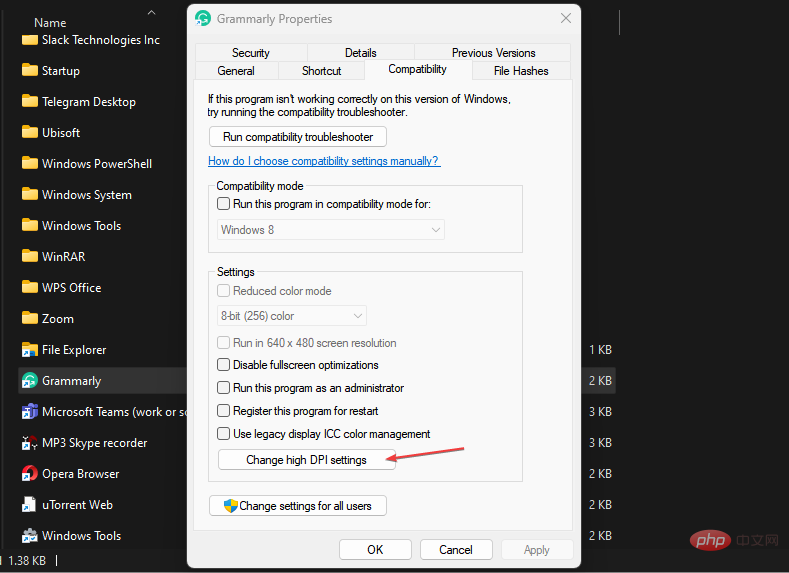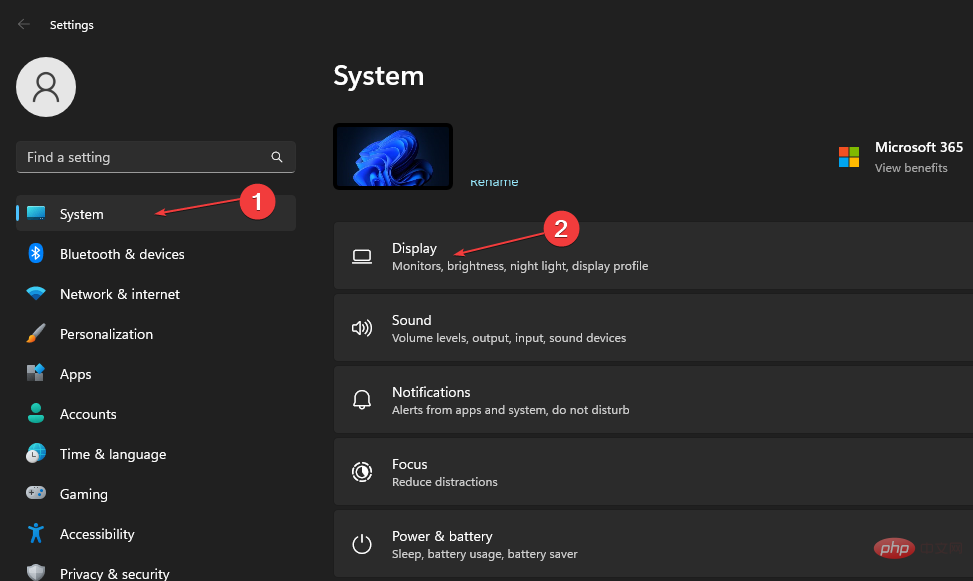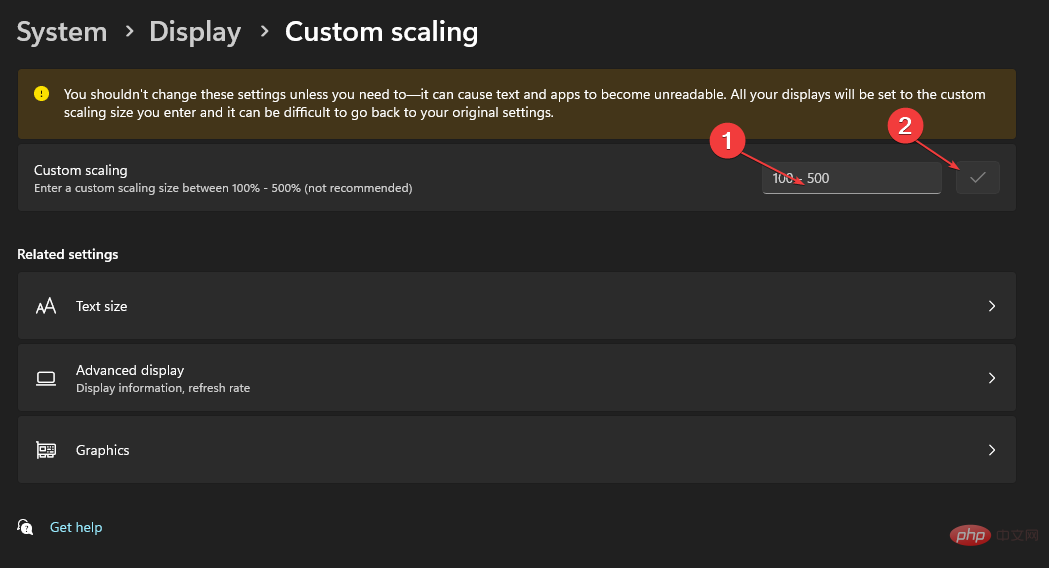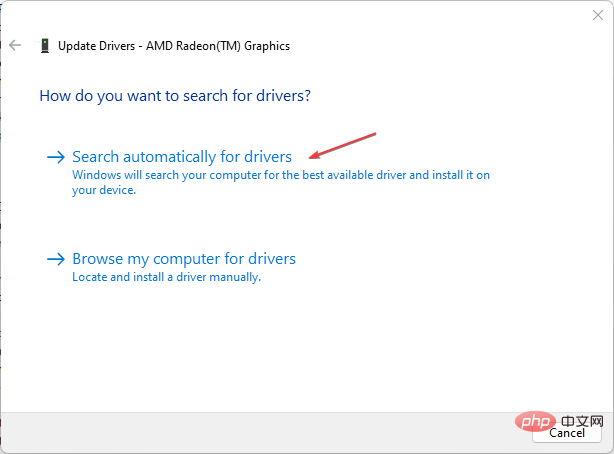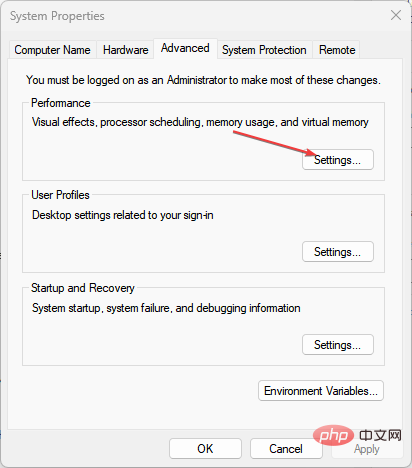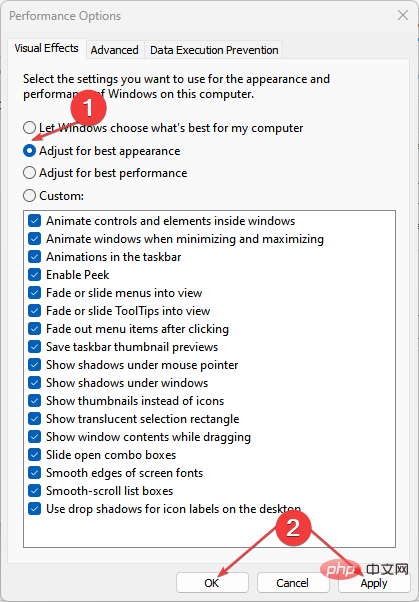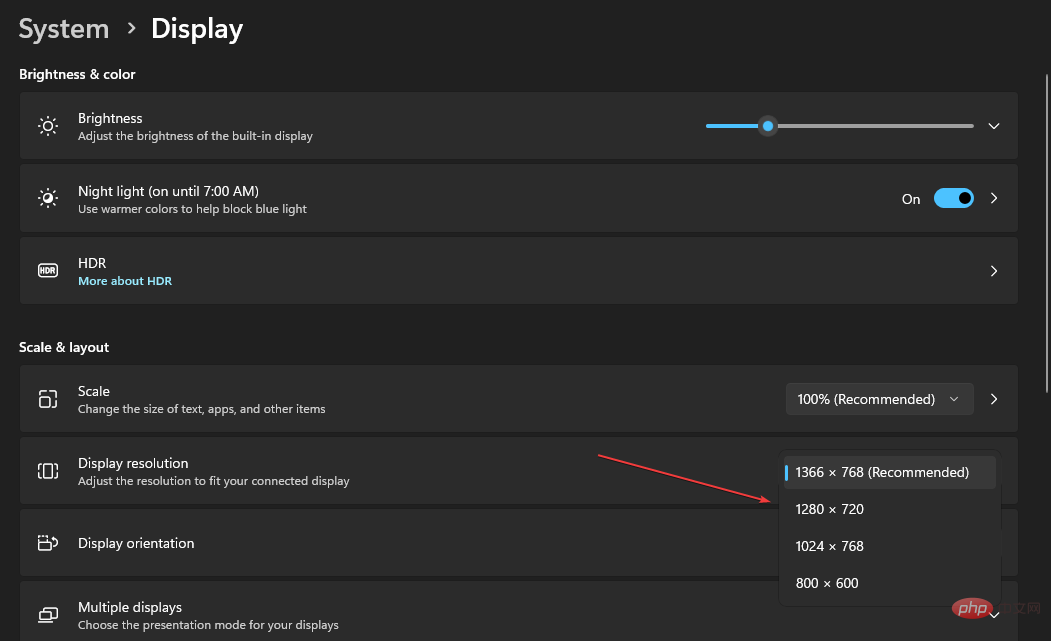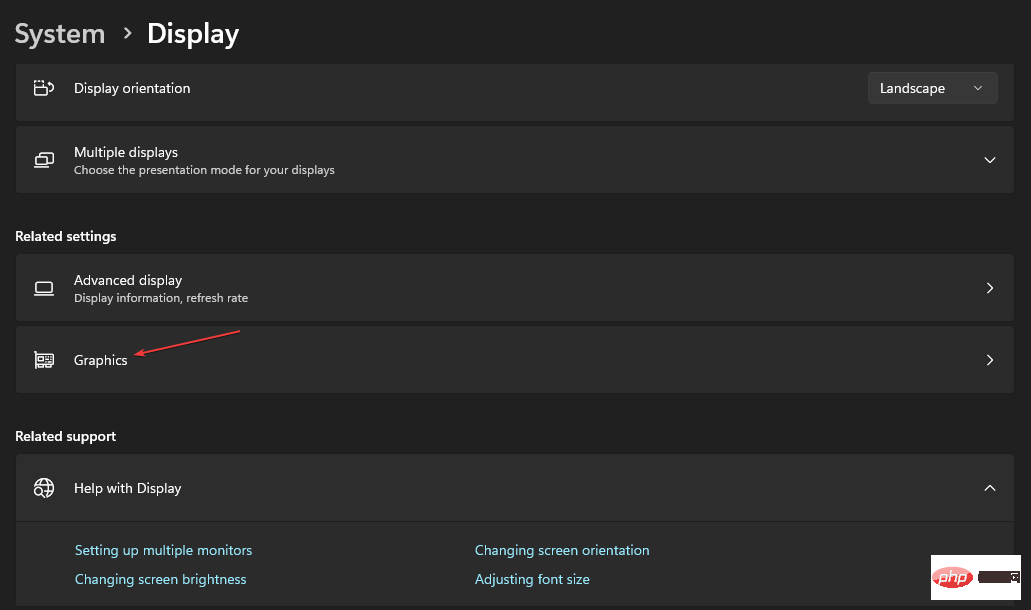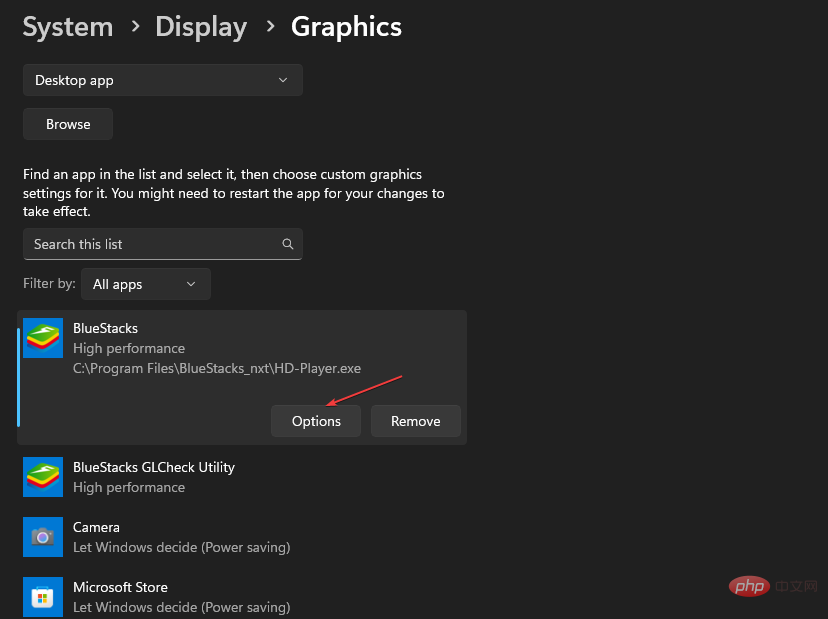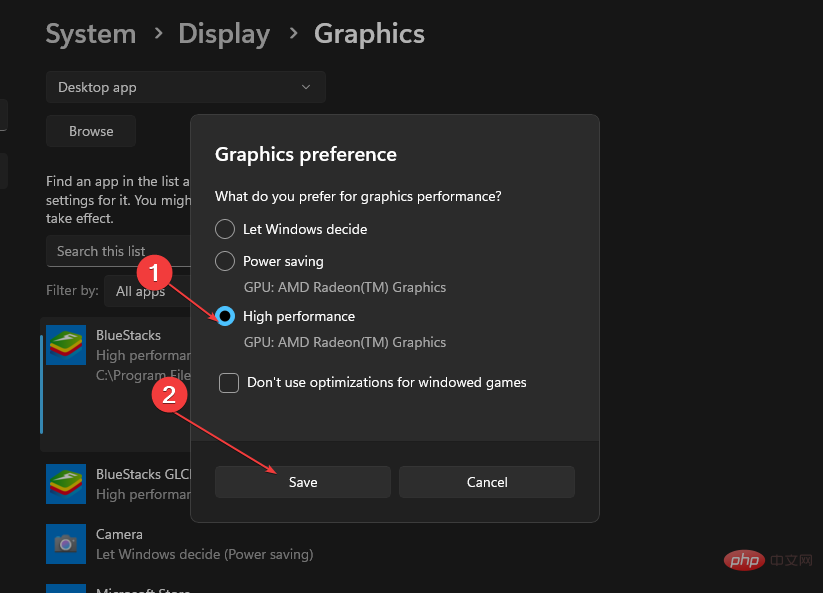How to fix Windows 11 scaling issues on high DPI monitors?
Windows 11 scaling issues on high DPI monitors occur when the system display has difficulty resolving the size of the screen content. It may cause content to be blurred or distorted.
So, we will discuss how to fix extension issues on Windows 11. Alternatively, we have a detailed guide on how to fix blurry screen issue on Windows 11 here.
What causes extension issues on Windows 11?
If the monitor or device you are using is not responding to scaling or has scaling issues, it could be due to a number of factors. Some worth noting are:
- Unsupported HD Monitors – By default, some apps and external monitors do not support features such as high DPI scaling. Therefore, you may not be able to adjust its display quality or make it adjust to system settings.
- Moving application windows between monitors using different display resolutions – If you switch between monitors using different display resolutions, scaling issues may occur. It causes scaling issues because display settings applied to one don't apply to the other.
- Using Separate Displays on PC Configurations – Sometimes different screen features are used on the same system (such as docked and undocked configurations), which can cause scaling issues because of these features Comes in different screen sizes and resolutions.
- Broken Graphics Drivers – When your drivers become outdated, they lose access to patches that fix the bug, causing them to malfunction.
- Close background applications running on your computer.
- Disconnect all remote connections to the computer.
- Restart the device in safe mode and check if the scaling issue persists.
- Left click
- Start button, find the app whose DPI settings you want to change, right-click it and select Open file location from the drop-down menu. Right-click the application shortcut in the left pane and select
- Properties from the context menu.
 Go to the Compatibility tab and click
Go to the Compatibility tab and click - Change High DPI settings.
 Check the Override high DPI scaling behavior checkbox. Scale the executor and select
Check the Override high DPI scaling behavior checkbox. Scale the executor and select - System (Enhancement) from the drop-down menu below.
 Click OK to save changes.
Click OK to save changes. - Retry the app and check if the problem still exists.
- Press to open the
- Windows Settings application. WindowsI Click System in the left pane and select
- Show options on the right.
 Go to the "Scale and Layout" tab, click the arrow button
Go to the "Scale and Layout" tab, click the arrow button - behind "Scale" and enter the desired zoom percentage and check the box next to it.
 If the
If the - "Logout" prompt appears, click it to log out of the system and then log in. Restart the computer.
3. Update your graphics card driver
- Key prompt "Run" window, type devmgmt.msc, and then click "OK" Open Device Manager. WindowsR
- Expand Display Adapters, right-click the driver, and select Update Driver from the context menu.

- Click Automatically search for updated driver software option.

- Restart your computer and check if the scaling issue persists.
Updating graphics drivers will fix bugs affecting high DPI monitors and install new features to improve display quality.
To make sure everything runs smoothly and avoid any kind of GPU driver errors, be sure to use the full Driver Update Assistant, which can resolve your issues in just a few clicks and we highly recommend DriverFix. Follow these simple steps to safely update your drivers:
- Download and install Driver Repair.
- Start the software.
- Wait for driver repair to detect any faulty drivers.
- The application will now display all problematic drivers and you just need to select the one you want to fix.
- Wait for the application to download and install the latest drivers.
- Restart your computer for the changes to take effect.
If you have any questions, check out our guide on updating graphics drivers on Windows 11. 4. Change appearance settings
- Press the key to open the "
- Run" dialog box, type sysdm.cpl, and then click "OK ” Open “System Properties”. WindowsR Go to the "
- Advanced" tab and then go to the "Performance" section and click on Settings " button.
 Click the radio button next to Adjust for best appearance, then click
Click the radio button next to Adjust for best appearance, then click - Apply, then click OK to save the changes.

- Press to open the
- Windows Settings app. WindowsI Click System in the left pane and select
- Show options on the right.
 Click the Display Resolution option and set a
Click the Display Resolution option and set a - higher or lower resolution for your monitor.
 Exit the Settings window and check if you encounter any scaling issues.
Exit the Settings window and check if you encounter any scaling issues.
6. Set graphics to high performance
- Press to open the Windows Settings app. WindowsI
- Click System in the left pane and select Show options on the right.

- Click the arrow button of the graphic.

- Go to the application whose graphics settings you want to change and click the Options button.

- Check the High Performance radio button and click the Save button.

- Close the Settings app and check if the problem persists.
High performance options in graphics settings help the system adjust to high DPI scaling.
7. Update the Windows operating system
- Click to open the Windows Settings application. WindowsI
- Click the Windows Update category, and then click Check for Updates. Wait for Windows Update results and if Windows Update is available, click Install Update.

- Restart the computer.
UPDATE The Windows operating system will install new updates and patches to fix bugs affecting your monitor and resolve scaling issues.
Read about ways to fix Windows Update not working properly if you encounter any issues during the update process.
Additionally, you may be interested in our article on performance comparison between GPU scaling and display scaling on PC.
Also, we have a comprehensive guide on how to fix apps not responding to scaling changes on Windows 11.
The above is the detailed content of How to fix Windows 11 scaling issues on high DPI monitors?. For more information, please follow other related articles on the PHP Chinese website!

Hot AI Tools

Undresser.AI Undress
AI-powered app for creating realistic nude photos

AI Clothes Remover
Online AI tool for removing clothes from photos.

Undress AI Tool
Undress images for free

Clothoff.io
AI clothes remover

Video Face Swap
Swap faces in any video effortlessly with our completely free AI face swap tool!

Hot Article

Hot Tools

Notepad++7.3.1
Easy-to-use and free code editor

SublimeText3 Chinese version
Chinese version, very easy to use

Zend Studio 13.0.1
Powerful PHP integrated development environment

Dreamweaver CS6
Visual web development tools

SublimeText3 Mac version
God-level code editing software (SublimeText3)

Hot Topics
 1387
1387
 52
52
 What is the reason why PS keeps showing loading?
Apr 06, 2025 pm 06:39 PM
What is the reason why PS keeps showing loading?
Apr 06, 2025 pm 06:39 PM
PS "Loading" problems are caused by resource access or processing problems: hard disk reading speed is slow or bad: Use CrystalDiskInfo to check the hard disk health and replace the problematic hard disk. Insufficient memory: Upgrade memory to meet PS's needs for high-resolution images and complex layer processing. Graphics card drivers are outdated or corrupted: Update the drivers to optimize communication between the PS and the graphics card. File paths are too long or file names have special characters: use short paths and avoid special characters. PS's own problem: Reinstall or repair the PS installer.
 How to solve the problem of loading when PS is always showing that it is loading?
Apr 06, 2025 pm 06:30 PM
How to solve the problem of loading when PS is always showing that it is loading?
Apr 06, 2025 pm 06:30 PM
PS card is "Loading"? Solutions include: checking the computer configuration (memory, hard disk, processor), cleaning hard disk fragmentation, updating the graphics card driver, adjusting PS settings, reinstalling PS, and developing good programming habits.
 Does H5 page production require continuous maintenance?
Apr 05, 2025 pm 11:27 PM
Does H5 page production require continuous maintenance?
Apr 05, 2025 pm 11:27 PM
The H5 page needs to be maintained continuously, because of factors such as code vulnerabilities, browser compatibility, performance optimization, security updates and user experience improvements. Effective maintenance methods include establishing a complete testing system, using version control tools, regularly monitoring page performance, collecting user feedback and formulating maintenance plans.
 How to speed up the loading speed of PS?
Apr 06, 2025 pm 06:27 PM
How to speed up the loading speed of PS?
Apr 06, 2025 pm 06:27 PM
Solving the problem of slow Photoshop startup requires a multi-pronged approach, including: upgrading hardware (memory, solid-state drive, CPU); uninstalling outdated or incompatible plug-ins; cleaning up system garbage and excessive background programs regularly; closing irrelevant programs with caution; avoiding opening a large number of files during startup.
 How to solve the problem of loading when the PS opens the file?
Apr 06, 2025 pm 06:33 PM
How to solve the problem of loading when the PS opens the file?
Apr 06, 2025 pm 06:33 PM
"Loading" stuttering occurs when opening a file on PS. The reasons may include: too large or corrupted file, insufficient memory, slow hard disk speed, graphics card driver problems, PS version or plug-in conflicts. The solutions are: check file size and integrity, increase memory, upgrade hard disk, update graphics card driver, uninstall or disable suspicious plug-ins, and reinstall PS. This problem can be effectively solved by gradually checking and making good use of PS performance settings and developing good file management habits.
 Is slow PS loading related to computer configuration?
Apr 06, 2025 pm 06:24 PM
Is slow PS loading related to computer configuration?
Apr 06, 2025 pm 06:24 PM
The reason for slow PS loading is the combined impact of hardware (CPU, memory, hard disk, graphics card) and software (system, background program). Solutions include: upgrading hardware (especially replacing solid-state drives), optimizing software (cleaning up system garbage, updating drivers, checking PS settings), and processing PS files. Regular computer maintenance can also help improve PS running speed.
 How to use mysql after installation
Apr 08, 2025 am 11:48 AM
How to use mysql after installation
Apr 08, 2025 am 11:48 AM
The article introduces the operation of MySQL database. First, you need to install a MySQL client, such as MySQLWorkbench or command line client. 1. Use the mysql-uroot-p command to connect to the server and log in with the root account password; 2. Use CREATEDATABASE to create a database, and USE select a database; 3. Use CREATETABLE to create a table, define fields and data types; 4. Use INSERTINTO to insert data, query data, update data by UPDATE, and delete data by DELETE. Only by mastering these steps, learning to deal with common problems and optimizing database performance can you use MySQL efficiently.
 Can mysql run on android
Apr 08, 2025 pm 05:03 PM
Can mysql run on android
Apr 08, 2025 pm 05:03 PM
MySQL cannot run directly on Android, but it can be implemented indirectly by using the following methods: using the lightweight database SQLite, which is built on the Android system, does not require a separate server, and has a small resource usage, which is very suitable for mobile device applications. Remotely connect to the MySQL server and connect to the MySQL database on the remote server through the network for data reading and writing, but there are disadvantages such as strong network dependencies, security issues and server costs.




